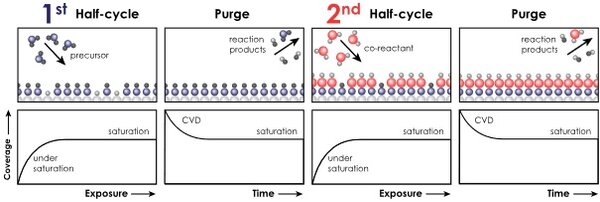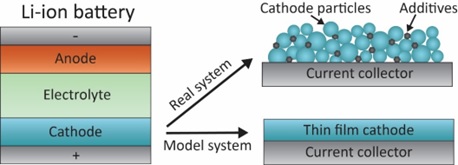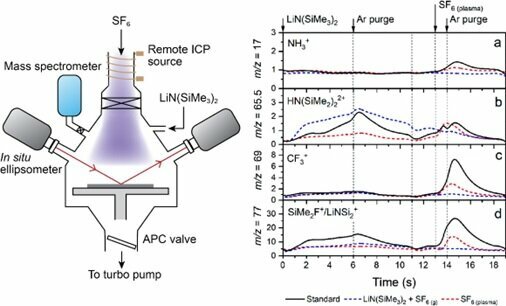
Atomic layer deposition (ALD) for thin films and interfaces
ALD is a thin film deposition technique based on self-limiting surface reactions and provides atomic level control over film thickness, chemical composition, and crystal orientation. Furthermore, ALD can be used to conformally coat 3D structures, such as porous electrodes.

To study the degradation phenomena at the cathode-electrolyte interface we make use of thin film model systems of high-voltage cathode materials, which are fabricated by ALD. We investigate how the chemical composition and crystallographic properties of high-voltage cathodes affect the interface with (liquid and solid) electrolytes. Currently, LiNiOx thin films are used to model Ni-rich NMC cathodes.
Secondly, we engineer strategies to create (electro-)chemically and mechanically stable electrode-electrolyte interfaces, such as applying ultra-thin (<5nm) ALD coatings on 2D and 3D cathodes and anodes.
These studies on thin film cathode model systems and interface engineering in batteries by ALD, in combination with operando characterization, are performed in collaboration with Dutch academic and industrial partners (BatteryNL).

Fundamentals of film growth
Research is performed on understanding the surface reactions between the precursor, co-reactant, and the surface that result in film growth. In-situ quadrupole mass spectrometry (QMS) gives direct insight into the gas species present in the reactor during the ALD cycle, and therefore provides information on the surface reactions. This knowledge can be useful for growing better quality ALD films. An example is the QMS study of the LiF ALD process using LiHMDS and SF6 plasma.